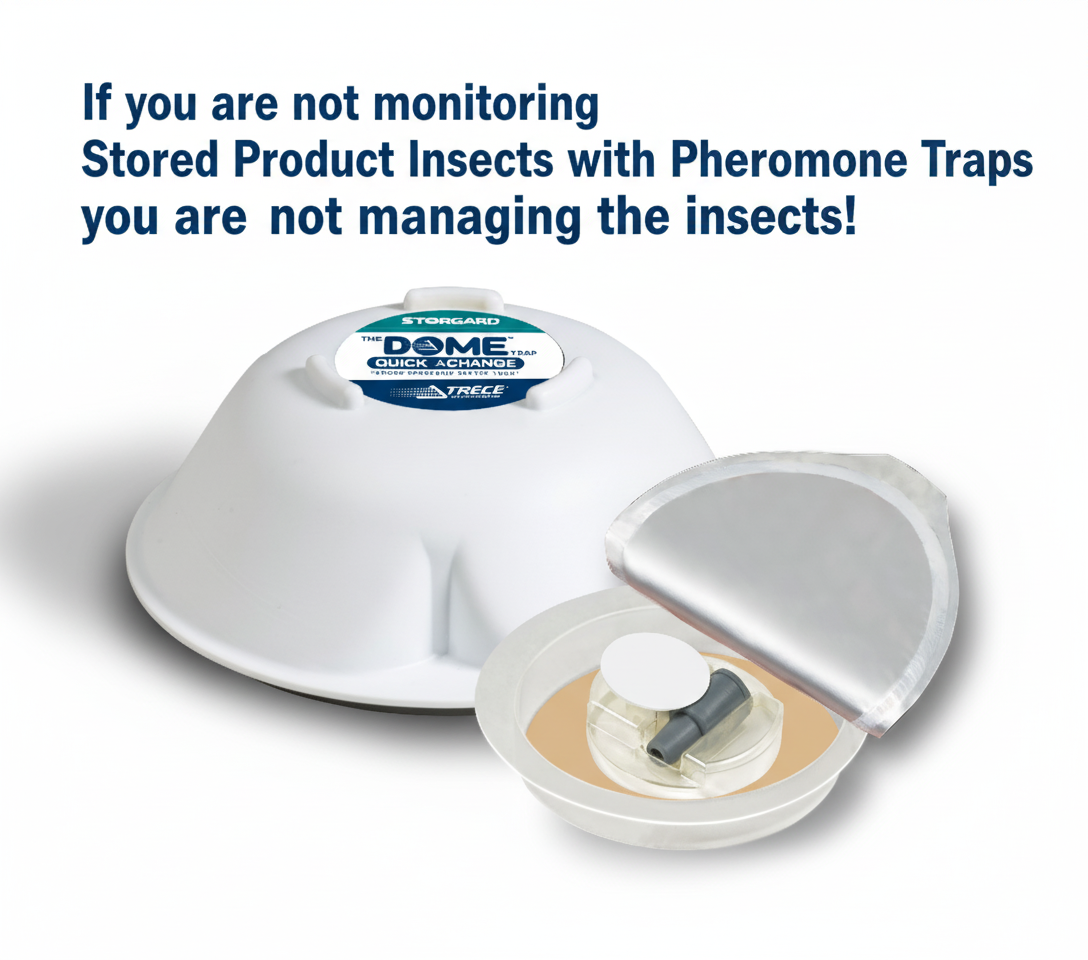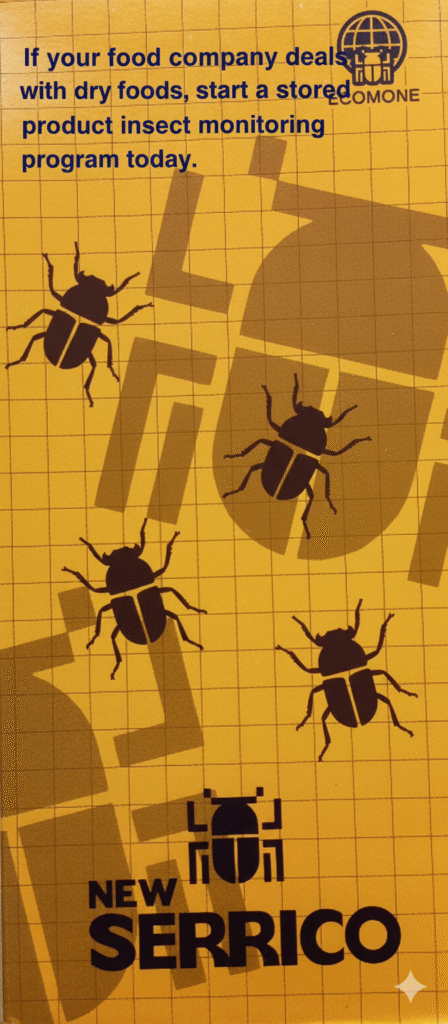
My Advanced Course in Pheromone Monitoring Using Pheromone Traps on 19 September 2025 was a success.
I am excited to share the compelling story of a recent experience in my three-decade-long journey into the world of pheromone monitoring for stored product insects (SPIs).
Last Friday, 19 September 2025, I had the distinct honour of teaching an advanced online course on this essential topic on behalf of Food Safety Works, Bangalore.
The enthusiastic participation of twenty food industry and pest management professionals, along with two advisors from the pest management industry, underscored a pronounced demand for deeper knowledge in this critical area of SPI monitoring by pheromone traps.
For far too long, the food and pest control industries have overlooked the immense value of SPI pheromone traps, which have been a proven solution for over four decades since the 1980s.
A neglect of SPI pheromone monitoring has led to ineffective SPI management programs, leaving food products vulnerable to insect damage and contamination.
With a vision for change, I designed this course to shift pest management and food industry practices, promoting the adoption of SPI pheromone traps.
During the course, we were privileged to gain insights from esteemed experts Dr Rajendran and Dr Raja Mahendran, who shared their wisdom on the complexities of fumigation and the constant challenge of ensuring pest-free food consignments.
Their contributions reinforced a central theme of our course: if fumigation is not properly monitored, it’s done incorrectly.
Similarly, a pest management program lacking pheromone monitoring is fundamentally incomplete.
At Giridhar Pai Associates (GPA), we are committed to catalysing change in the pest control industry.
Our SPI pheromone monitoring course revealed a significant, latent demand for specialised knowledge in this field.
We demonstrated that effective and sustainable SPI management begins with a proactive approach to monitoring pest populations.
Good news awaits Indian SPI pheromone trap users!
Unlike previous years, when these traps had to be imported directly by the users, the best international traps are now readily available for the most common stored product pests in India, including cigarette beetles (CB), confused flour beetles/red flour beetles (CFB/RFB), and almond moths (AM). Additionally, we covered traps for more challenging pests, such as khapra beetles / warehouse beetles (KB/WB), and lesser grain borers (LGB).
Our core message to every participant was simple yet profound: every food company handling dry goods must implement a pheromone trapping program. Our emphasis on SPI monitoring was not presented as a suggestion; rather, it was shown to be a requirement.
Still, as a necessity for modern food safety standards, by utilising these traps to monitor supply chains and acting on data-driven insights when trap counts exceed set thresholds, food companies can significantly reduce their reliance on chemical pesticides.
We take pride in having empowered a new group of SPI monitoring professionals, equipping them with the knowledge to manage pests more effectively and sustainably.
The first Food Safety Works course on SPI monitoring marks a pivotal step forward for the industry, and we are eager to see participants apply these practices to create safer, pest-free food supply chains.

If you are not monitoring stored product insects with pheromone traps, you are not effectively managing the insects.
Now, let me share a bit about my journey that led to the development of this course. I bring over thirty years of experience in handling pheromone traps. My career began in a professional setting, where I managed traps for my employer from 1995 to 2000, and subsequently provided solutions to food industry clients from 2002 to 2007.
However, my twelve-year tenure in the agricultural commodity warehousing industry from 2007 to 2019 posed specific challenges. The high SPI loads in stored grains across India often rendered pheromone traps unnecessary for detection. Walking through warehouses filled with paddy, wheat, maize, cumin, coriander, ginger, or chilli reveals a bustling environment of SPIs—flying and crawling everywhere!
Since founding Giridhar Pai Associates in 2020, I have reignited my passion for pest monitoring by reintroducing Trece Inc.’s Storgard pheromone traps and lures, along with Fuji Flavours’ New Serrico Traps, to the Indian pest control and food industries. Recognising a significant gap in the understanding of SPIs and their pheromone monitoring, I collaborated with Food Safety Works to create an educational course aimed at empowering individuals in these fields.
Our initiative has achieved a groundbreaking milestone—this is the first program in India dedicated solely to training professionals on monitoring stored product insects using pheromone traps, a feat that no other industry association or trade body has accomplished. In just two weeks of outreach, we garnered twenty registrations, with equal representation from both pest control and food companies.
The live sessions were not just educational; they were interactive forums that sparked intense discussions around fumigation, monitoring techniques, and the management of SPIs in dry foods. This critical subject requires greater focus from both the food and pest control sectors, and we are excited to contribute to this essential dialogue.
We passionately believe that each course participant will return to their workplaces equipped and empowered to adopt SPI pheromone monitoring as an effective alternative to routine pesticide applications and fumigation. This shift will undoubtedly improve their pest management strategies.
I am particularly inspired by the enthusiastic feedback we’ve received from participants, which affirms our efforts in paving the way for broader knowledge of stored product insect monitoring on a global scale.
For instance, one participant from the food industry has already ordered pheromone traps and lures for AM, CB, and CFB/RFB from GPA to kickstart their own monitoring program.
Additionally, a fumigator has transitioned from using traditional Dome Traps to the more efficient Quick Change Dome at customer sites, enhancing fumigation timing and reducing costs by aligning procedures with peak SPI populations detected by the traps.
As I reflect on the success of the pheromone monitoring course I conducted on 19 September 2025, I recognise it as a significant milestone in modern pest management.
I am eager to witness the positive impact of these innovative strategies across the food industry, ensuring not just compliance with safety standards but also fostering a culture of proactive pest control that benefits everyone involved in the food supply chain.
Together, we can create safer, pest-free food environments that prioritise public health and sustainability.

If your food company handles dry foods, consider implementing a stored product insect monitoring program today.
